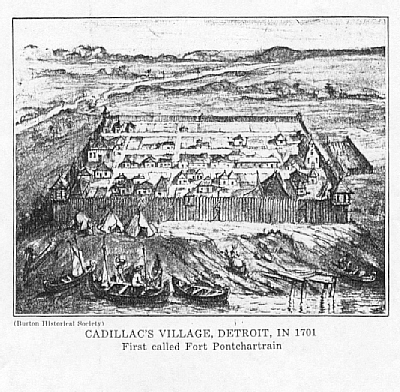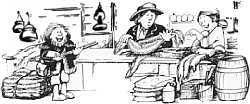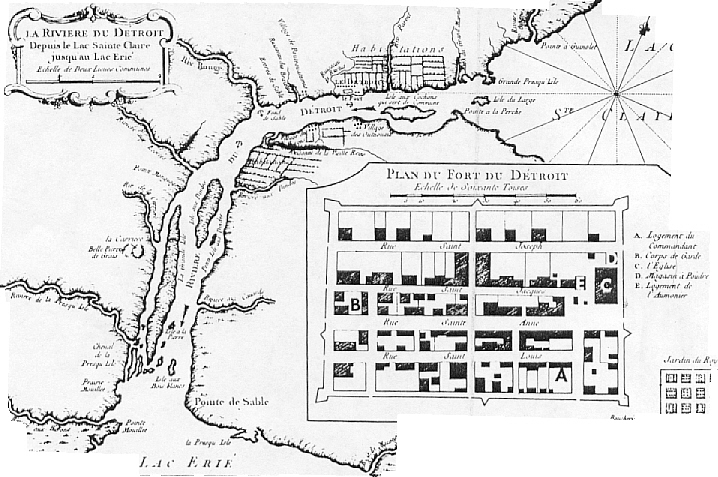
Fort Pontchartrain

Around the year 2001, the French-Canadian Heritage Society of Michigan sent out a call to all those who had ancestors who might have lived at the fort between 1701-1710. I had three: André Chauvet dit Camirand, his wife Anne Pastourel and their son, Pierre Chauvet dit Camirand.
Fort Pontchartrain was built on the Detroit River, under the direction of Antoine de Lamothe Cadillac, in 1701. Soldiers, carpenters and a dozen or so Indians labored in the summer sun that year to get the tiny church of St. Anne under a roof, and a little over an acre of land enclosed in a garrison. It would be one of a string of forts built along the Great Lakes dotting either side of Lake Ontario and Lake Erie. The purpose: to provide French fur-trading depots. A place where Indians and coureurs de bois could bring their pelts, to be traded for a musket, a knife, a sack of flour, or far too often, a jug of brandy. Eventually, these furs were shipped to France to be made into hats or other clothing for the well-to-do.
Soldiers were often sent over from France to help the settlers defend themselves against the English or whoever else might threaten the fur trade. In this capacity, they were frequently assigned to the forts. Camirand was one of them--a sergeant of the troops under Cadillac. Was he there at the same time as Anne Pastourel? It would seem so.

The fort was enlarged in 1706; a public windmill erected nearby to accommodate an influx of settlers. By 1708 there were thirty-nine houses within the palisades, sixty-three settlers of whom thirty-four were traders.
In March 1707, Camirand acquired from Cadillac, lot #2 located within the fort. Plots inside the stockade, usually twenty by twenty feet in size, were not owned, but rented from Cadillac. From March 1707 to the end of June 1720, sixty-eight such lots were granted. The stipulation always being that they had to be improved. Soldiers were also granted patches of land outside the fort where they could plant a garden. Camirand probably acquired one of these also, because in July 1707, he married Anne in Montreal. Was she back home in Repentigny? Don't know. But, their first son, André was born at the fort in May 1708 and a second son, Pierre, was also born there in May 1710.
Camirand and his family stayed in Detroit until at least April 1711 when Anne was godmother to a Huron girl. But, they must have left soon after since a daughter was born in Trois Rivières, or more likely Pointe-du-Lac, around 1712. Probably by now, the soldier had become a farmer.
![]()
Special thanks to Gail Moreau, V.Pres. of Michigan's French-Canadian Heritage Society, for sending me a copy of the August 1704 contract between Madame Lamothe and Anne Pastourel, and for her help in deciphering it.
Source for Detroit data: History of Wayne County and the City of Detroit, Michigan by C.M. and M.A. Burton.